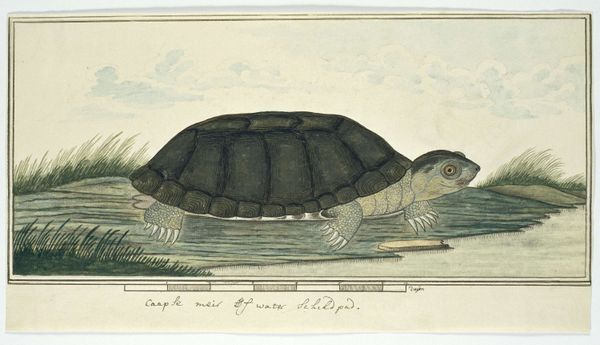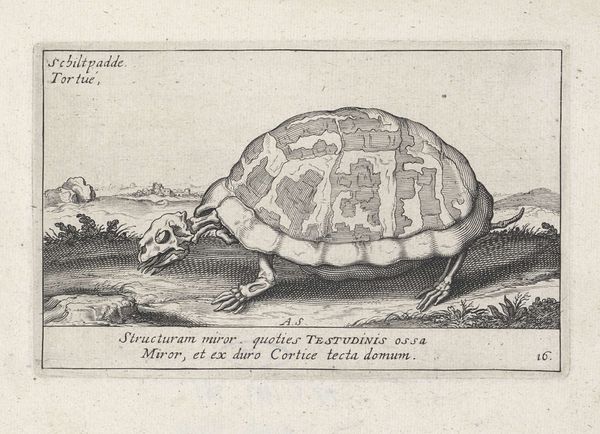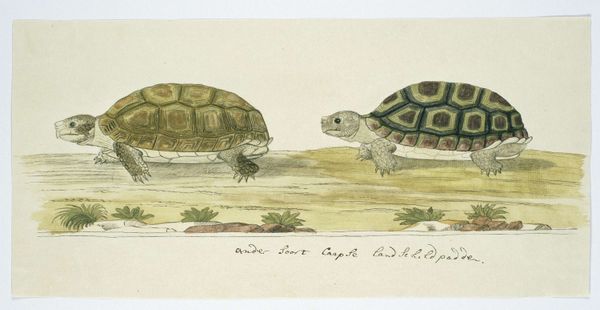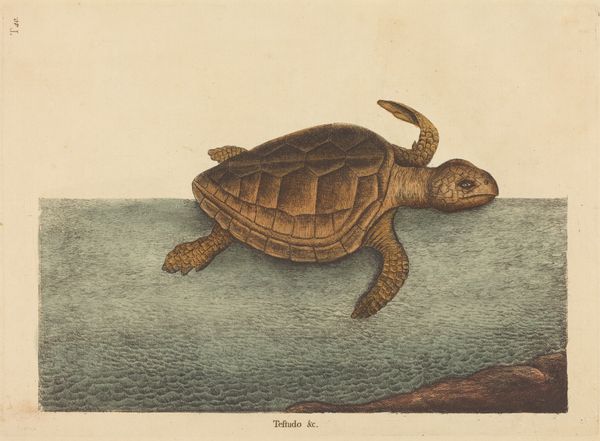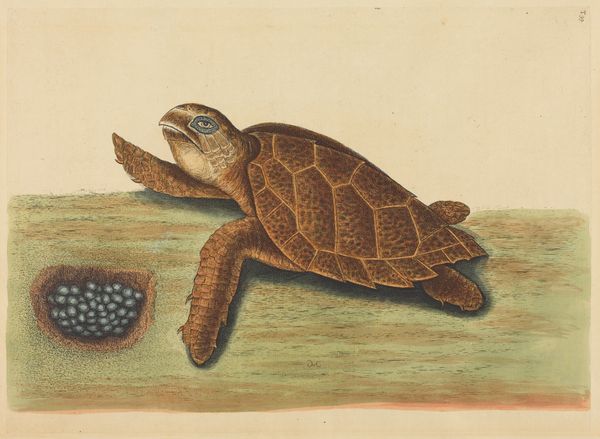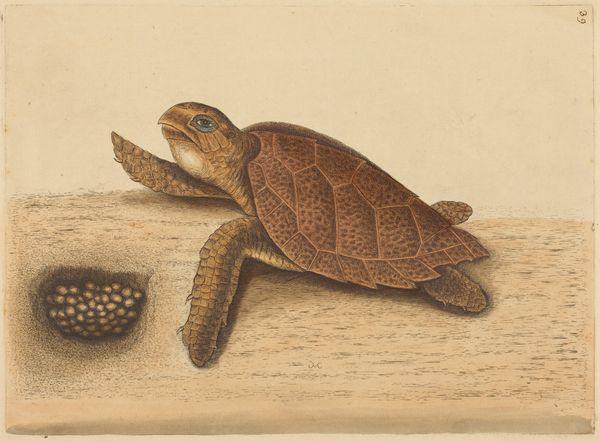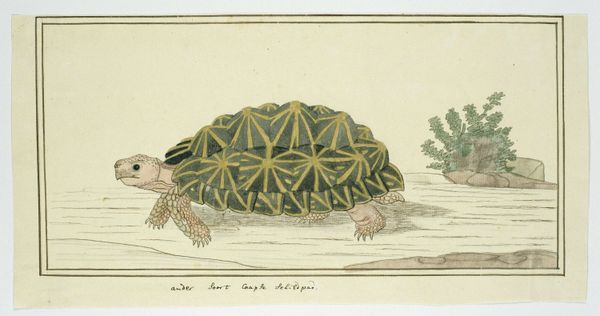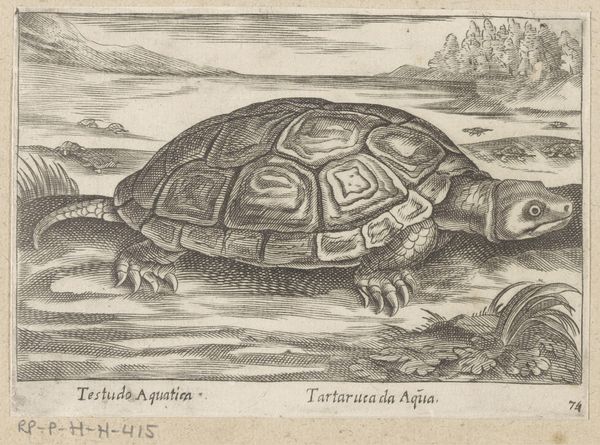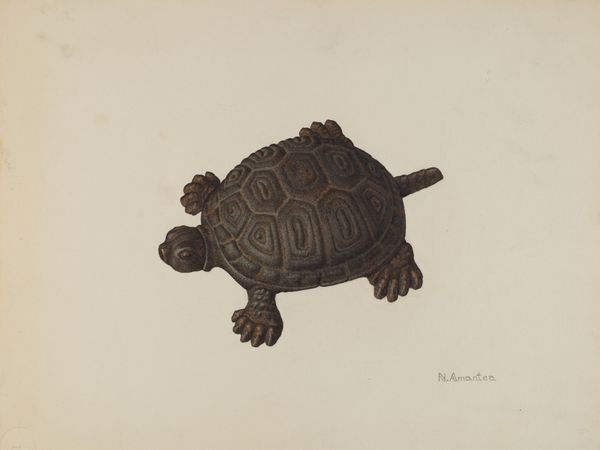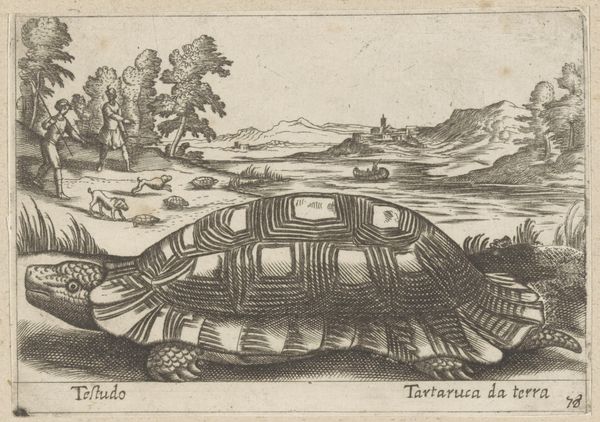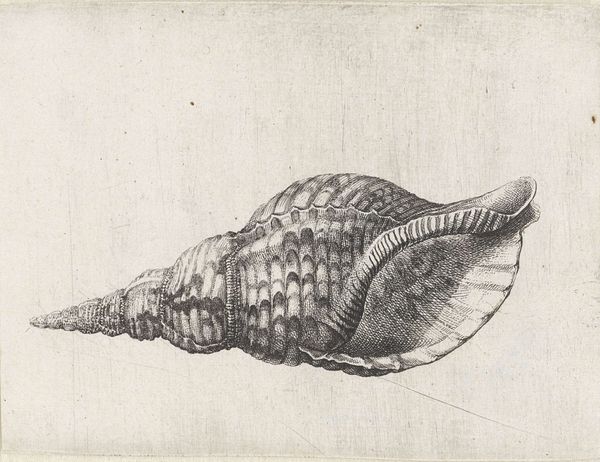
drawing, watercolor
#
drawing
#
animal
#
landscape
#
watercolor
#
coloured pencil
#
watercolour illustration
#
watercolor
#
realism
Dimensions: height 660 mm, width 480 mm, height 206 mm, width 315 mm, height 142 mm, width 305 mm
Copyright: Rijks Museum: Open Domain
Curator: I’m intrigued by this piece—a watercolor drawing titled "Testudo pardalis (Leopard tortoise)" by Robert Jacob Gordon. It's thought to have been created sometime between 1777 and 1786. What do you make of it? Editor: It gives off such a studious, almost scientific air. The ruler placed beside the tortoise screams, “I’m here for serious observation!” And yet, there’s a tranquility to the animal itself that balances that clinical feeling. Curator: I agree. It's as if Gordon was torn between the scientist’s need for objective measurement and the artist’s desire to capture something…more. That segmented shell is almost like an early form of data visualization. Editor: Absolutely! Think of the tortoise itself. Slow, steady, carrying its home—a symbol of the earth, resilience, wisdom even. And the choice of a leopard tortoise—did its spots hold some significance, some connection to other indigenous symbols? I see stories layered within stories. Curator: It makes me wonder if Gordon saw the tortoise as a kind of miniature world itself, its shell echoing the landscapes he was charting. The detailed rendering gives a strange dignity to the animal. Editor: Right, that contrast between the scientific cataloging and the inherent symbolism of the tortoise creates a beautiful tension. It speaks to how we, even then, sought to understand nature—not just measure it, but find our place within its story. It makes one reflect, are we not all tortoises carrying the world? Curator: A potent question indeed. This drawing highlights the artist's pursuit to see the natural world not just as a collection of specimens but as a reflection of ourselves. It really leaves a lingering impression, doesn't it? Editor: It does. There's a thoughtfulness to it, like a silent meditation on nature, knowledge, and our role within it. And I find myself appreciating it more because of it.
Comments
No comments
Be the first to comment and join the conversation on the ultimate creative platform.

